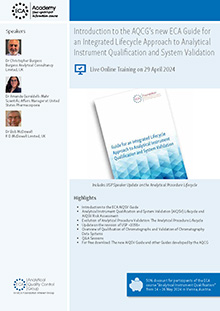FDA Form 483 due to Insufficient Investigations after Out-of-Specification (OOS) Dissolution Results

Recommendation
Monday, 29 April 2024 10.00 - 16.00 h
Includes USP Speaker Update on the Analytical Procedure Lifecycle
Observations made by the inspector during an FDA inspection are listed on the FDA Form 483. Some of these reports are available under "Frequently requested or proactively posted compliance records" on the FDA homepage.
On 24 May 2022, a new FDA Form 483 was published. The document dated 10 May 2022 goes back to an inspection from 02 to 10 May 2022 at an Indian drug manufacturer.
Investigations of Out-of-Specification (OOS) Assay and Dissolution Results
The first observation addresses the following issue: "Investigations of an unexplained discrepancy and a failure of a batch or any of its components to meet any of its specifications did not extend to other batches of the same drug product and other drug products that may have been associated with the specific failure or discrepancy."
According to the FDA, the company had rejected several batches after OOS investigations showed a lack of control over compression machines settings. In particular, a too high or too low compacting force was determined as a root cause. This led, for example, to segregation of powder, OOS result for content uniformity and in several cases to not meeting the dissolution specifications.
However, in all cases, the investigations were limited to the directly affected batch only. No retrospective review was performed. Thus, from the FDA's point of view, it is possible that other batches of the same product or other tablet products are also affected by the same problem.
Two other observations play a role in this context. According to the statement to observation 2 of the report, the values for the compaction force were documented, but there were no limits established on the basis of validation studies. Thus, it was not ensured that these limits were appropriate. The FDA writes that "the ranges are only 'tentative limits' and the operators can operate the compression machines outside of these limits without initiating any type of investigation."
In addition, the following was noted (observation 3): "During tablet compression, the machines are set to reject tablets above or below a set percentage of the [.. ] compression force setting. If the percentage limits are not properly set, the compression machine could accept tablets that may not meet all specifications. The limits are set by production supervisors during machine set-up and can be changed by the supervisor at any time during manufacturing."
How the parameters were set was probably rather random. There were no written limits, nor was there any documentation of which limits were actually set and whether they were changed during ongoing production.
Stability Testing
Observation 4 refers to the stability studies. The time frames for analytical testing according to the company's procedure were not followed. For several hundred stability samples that had been removed from the stability chambers, the testing had not been completed after 30 days. In particular, dissolution testing was not initiated in several cases.
The full report, which also describes two other observations, is available as a PDF file on the FDA website.
Related GMP News
GMP Conferences by Topics
- General Quality Assurance and GMP Compliance Topics
- Hygiene
- General Microbiology Topics
- Regulatory Affairs
- Development
- General Analytics Topics
- Good Distribution Practice
- Sterile Manufacturing
- Computer Validation
- General Qualification/Validation Topics
- General Engineering Topics
- APIs/Excipients
- GMP Basic Training Courses
- Medical Devices and Combination Products
- Packaging and Packaging Material
- Data Integrity
- Qualified Person (QP)
- GMP Auditing
- Documentation
- Cleaning Validation
- General IT Compliance Topics
- Impurities
- OOS / OOE / OOT
- Material Testing
- Validation of Analytical Methods
- Analytical Instrument Qualification
- Stability Testing
- Microbiological Testing
- Technology
- General Manufacturing Topics
- Solid Dosage Forms/Semi-Solid Dosage Forms
- Biotechnology/Blood/ATMP
- Herbal Drug Products/Cannabis/Radiopharmaceuticals
- Others




